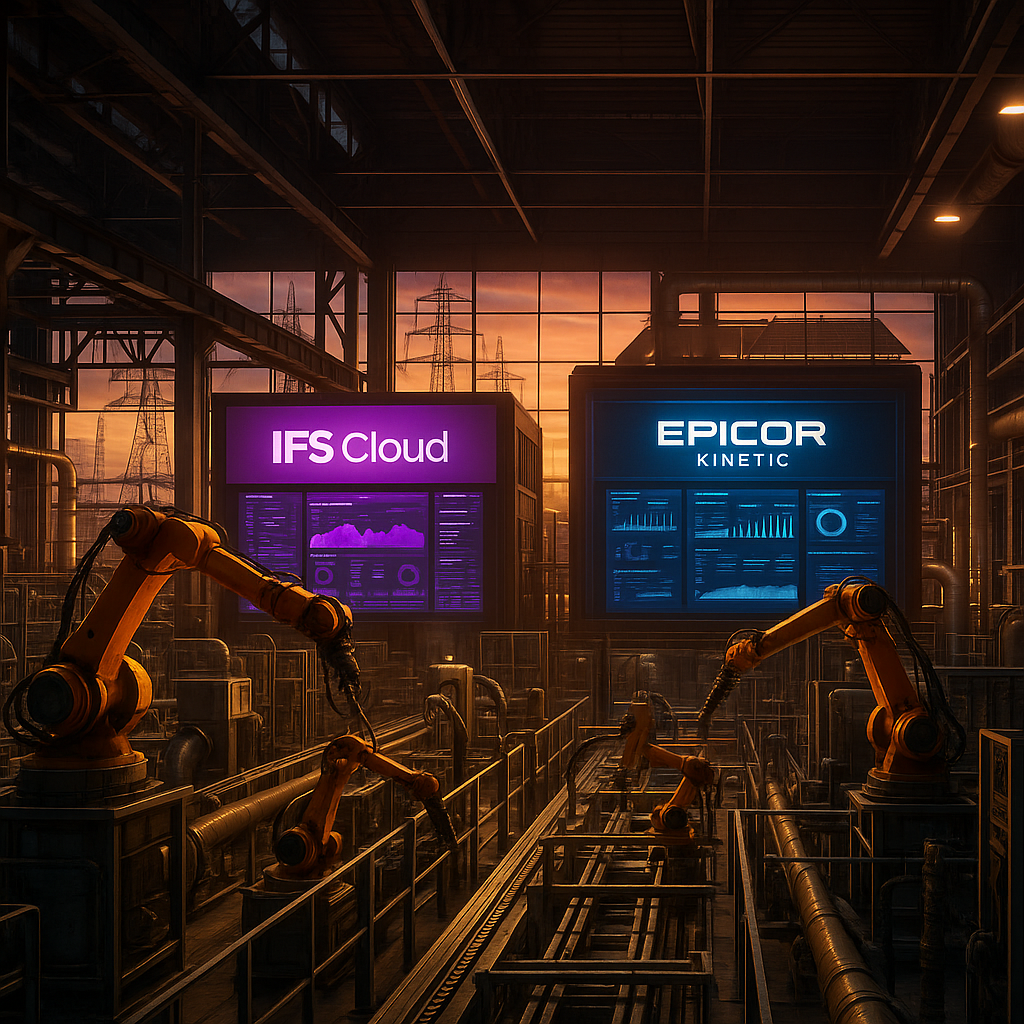A Primer on IFS EAM: What you Need to Know
Managing capital assets in 2026 requires more than just a clipboard and a spreadsheet. It requires a digital ecosystem that predicts failures before...
2 min read
 Blake Snider
:
Nov 24, 2025 12:00:00 AM
Blake Snider
:
Nov 24, 2025 12:00:00 AM
Do you ever find it challenging to keep track of all the equipment and assets that your business relies on? If you are juggling spreadsheets or relying on outdated legacy systems, you are likely reacting to failures rather than preventing them.
That is where Enterprise Asset Management (EAM) comes in. In 2026, EAM isn't just about fixing broken machines; it's a strategic solution that manages the entire lifecycle of your physical capital—from the moment you procure a vehicle to the day you decommission a generator.
Enterprise Asset Management (EAM) is a comprehensive solution that helps businesses manage their equipment and assets, from heavy machinery to property and fleets. EAM provides total visibility over assets, enabling businesses to maximize their return on investment (ROI) by making smarter maintenance decisions, improving day-to-day efficiencies, and enhancing compliance.
Unlike simple tracking tools, EAM includes a mix of software, services, and systems that enable organizations to track asset-related data, including maintenance history, warranty status, and regulatory compliance. EAM software can be tailored to meet specific business needs and typically includes:
Asset Lifecycle Management
Maintenance Management (Work Orders)
Supply Chain & Inventory Management
Environmental, Health, and Safety (EHS)
One of the primary benefits of EAM is its ability to help businesses take a strategic approach to their assets. When combined with Enterprise Resource Planning (ERP), EAM provides a "single source of truth" for your organization.
By tracking and analyzing asset-related data—such as utilization rates and overall health—businesses can identify opportunities for improvement. This shifts your team from "reactive" repairs (fixing it when it breaks) to "proactive" maintenance (fixing it before it breaks), significantly reducing unplanned downtime.
EAM helps businesses optimize inventory by tracking spare parts levels and automating reordering. With IFS EAM solutions, you can ensure that your technicians always have the right part at the right time, eliminating the risk of stockouts that lead to extended shutdowns.
EAM is critical for keeping track of compliance requirements, such as Health, Safety, and Environmental (HSE) regulations. By tracking maintenance actions and technician certifications, businesses can easily demonstrate compliance with rigorous industry standards like ISO 55000 and PAS 55.
A common question we hear is: "We have a CMMS, why do we need EAM?"
A Computerized Maintenance Management System (CMMS) is designed primarily to manage maintenance requests and work orders. It is a tactical tool for the maintenance department.
EAM, on the other hand, is a strategic tool for the entire enterprise. It includes all the capabilities of a CMMS but adds functionality for finance, human resources (HR), procurement, and project management. EAM solutions function as a complete software system for asset-intensive organizations—like utilities, oil and gas, and manufacturing—that wholly rely on their equipment to generate revenue.
The biggest differentiator in 2026 is Artificial Intelligence. Modern EAM platforms use AI to analyze vibration, heat, and output data from assets in real-time. According to Deloitte's 2026 Manufacturing Industry Outlook, manufacturers who leverage this "smart factory" data to predict failures see a measurable reduction in maintenance costs and a spike in Overall Equipment Effectiveness (OEE).
Selecting the right EAM solution is critical to the success of your asset management strategy. A good EAM solution should not only meet your current needs but also provide a flexible and scalable platform to support future growth.
If you are looking for a robust and reliable EAM solution, IFS Cloud is an excellent choice. It offers deep insights into asset performance and embeds AI directly into the maintenance workflow. However, software is only half the battle—implementation is key.
At Astra Canyon Group, we specialize in helping businesses evaluate, select, and implement IFS EAM solutions. Our team of experts ensures a smooth transition, helping you move from "firefighting" failures to managing a world-class asset portfolio.
Ready to modernize your maintenance strategy? Contact us at Astra Canyon Group to discuss how we can help you elevate your asset management maturity.

Managing capital assets in 2026 requires more than just a clipboard and a spreadsheet. It requires a digital ecosystem that predicts failures before...

Every minute of downtime hits harder in asset-heavy industries. For energy and industrial manufacturers, unreliable systems don’t just slow things...

Manufacturing Execution Systems (MES) are essential in modern manufacturing, providing real-time monitoring, tracking, documentation, and control of...